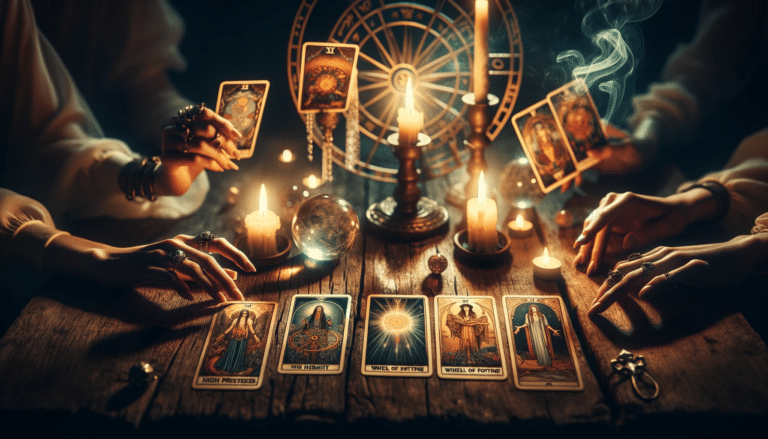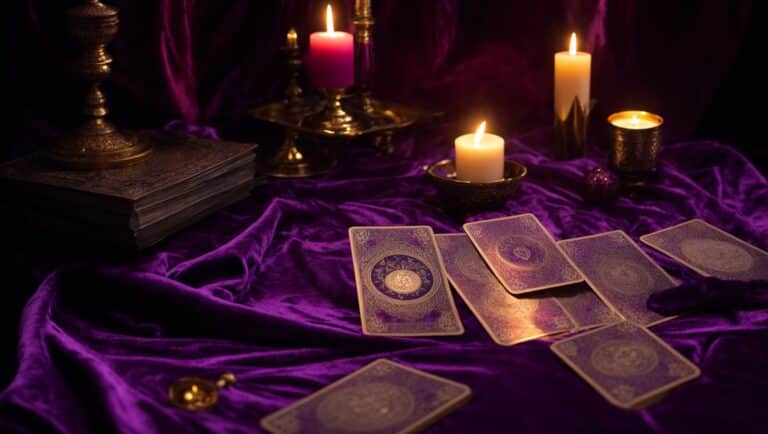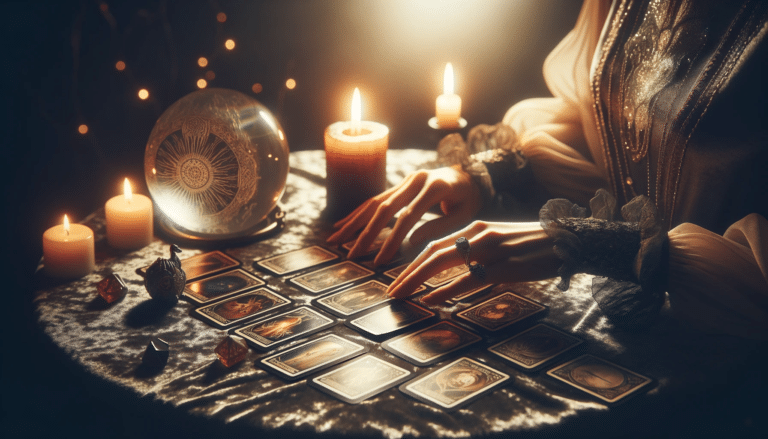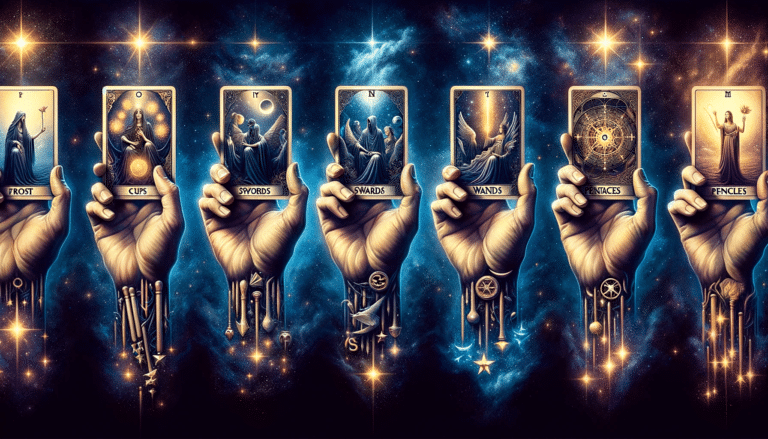Interpreting Tarot Cards for Beginners: Find Your Path & Future

Ever wondered what the universe is trying to tell you through tarot cards?
Many are drawn to the mystery and symbolism of tarot.
It’s not as complicated as it seems. With this “Interpreting Tarot Cards for Beginners” guide, you’ll learn to interpret tarot cards and uncover their profound meanings. You’ll discover how to conduct your own readings, avoid common mistakes, and connect with the powerful messages that tarot holds.
Dive in, and let’s start your tarot journey together.
Key Takeaways
- Tarot cards are divided into two sections: the Major Arcana and the Minor Arcana, with the Major Arcana representing significant life events and the Minor Arcana representing day-to-day happenings.
- Each tarot card has specific symbols that carry meanings, such as cups representing emotions and relationships, swords symbolizing intellect and conflict, wands representing energy and ambition, and pentacles symbolizing the material world and practicalities.
- Interpreting tarot card meanings involves considering the card’s symbolism, position in the spread, and surrounding cards, with the Major Arcana cards often having deeper and more complex meanings, and the Minor Arcana cards reflecting everyday matters and experiences.
- Tarot card spreads, such as the One-Card Spread, Three-Card Spread, Five-Card Spread, and Celtic Cross Spread, serve as maps for readings, giving shape and context to the messages of the cards.
Understanding the Tarot Deck
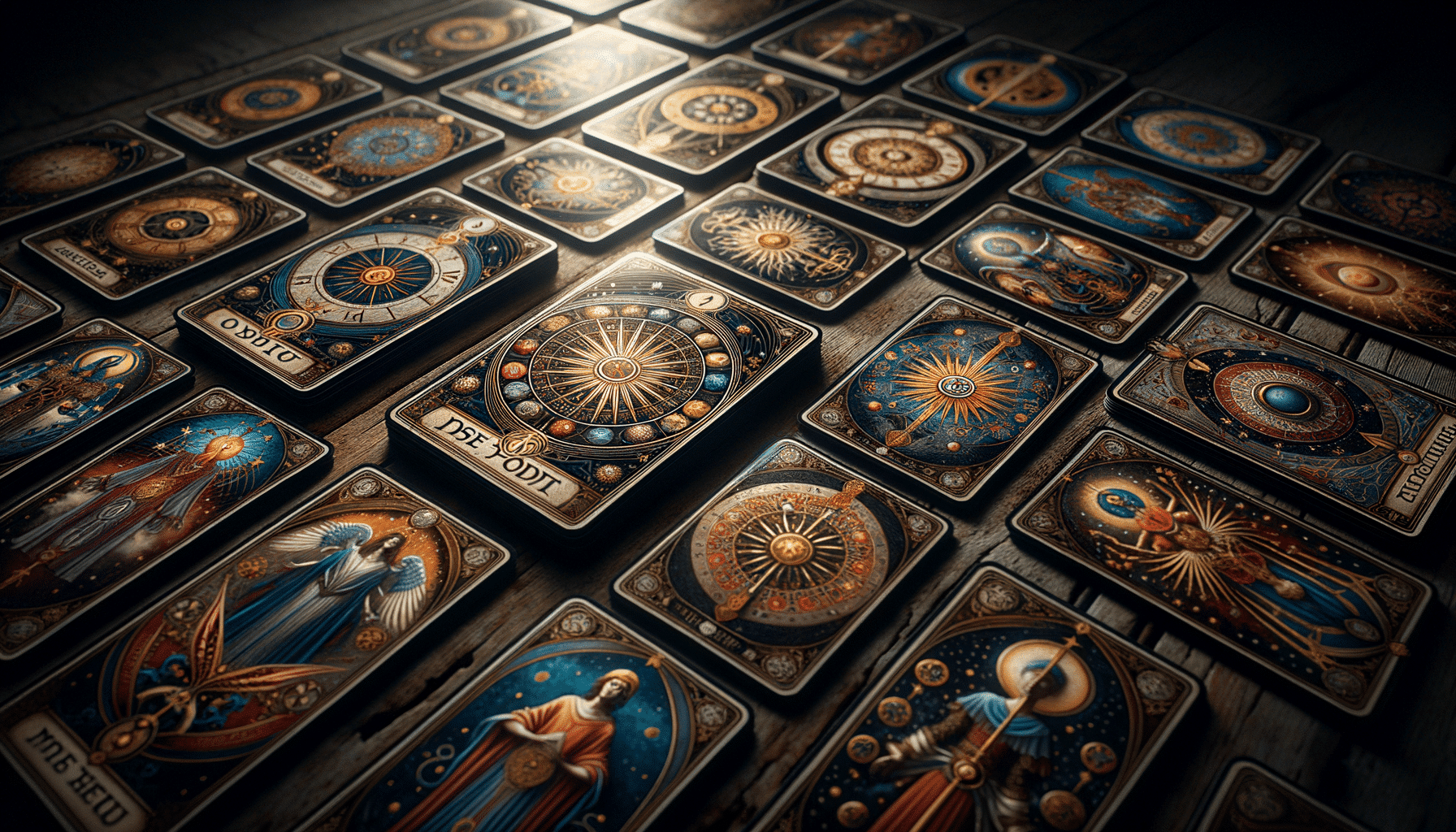
Before you can begin to interpret tarot cards, it’s crucial that you understand the structure and symbolism of the tarot deck. A standard deck consists of 78 cards split into two sections: the Major Arcana, comprising 22 cards, and the Minor Arcana, which includes 56 cards.
You’re not alone if you’re feeling a bit overwhelmed by this information, but don’t worry, it’s simpler than it seems.
The Major Arcana cards depict significant life events or stages, whereas the Minor Arcana cards represent day-to-day happenings. The Minor Arcana is further divided into four suits: Cups, Wands, Swords, and Pentacles, each symbolizing a different aspect of human life. Cups relate to emotions and relationships, Wands to creativity and passion, Swords to intellect and conflict, and Pentacles to material wealth and work.
Understanding these basics will set a strong foundation for your tarot journey. You’ve got this! Remember, every tarot reader started where you’re right now. Keep an open mind and let your intuition guide you.
You’re now ready to delve deeper into the world of tarot, so let’s move on to the basics of tarot card symbols.
Check out our Tarot Decks & Oracle Cards here…
Beginner’s Guide to the Basics of Tarot Card Symbols
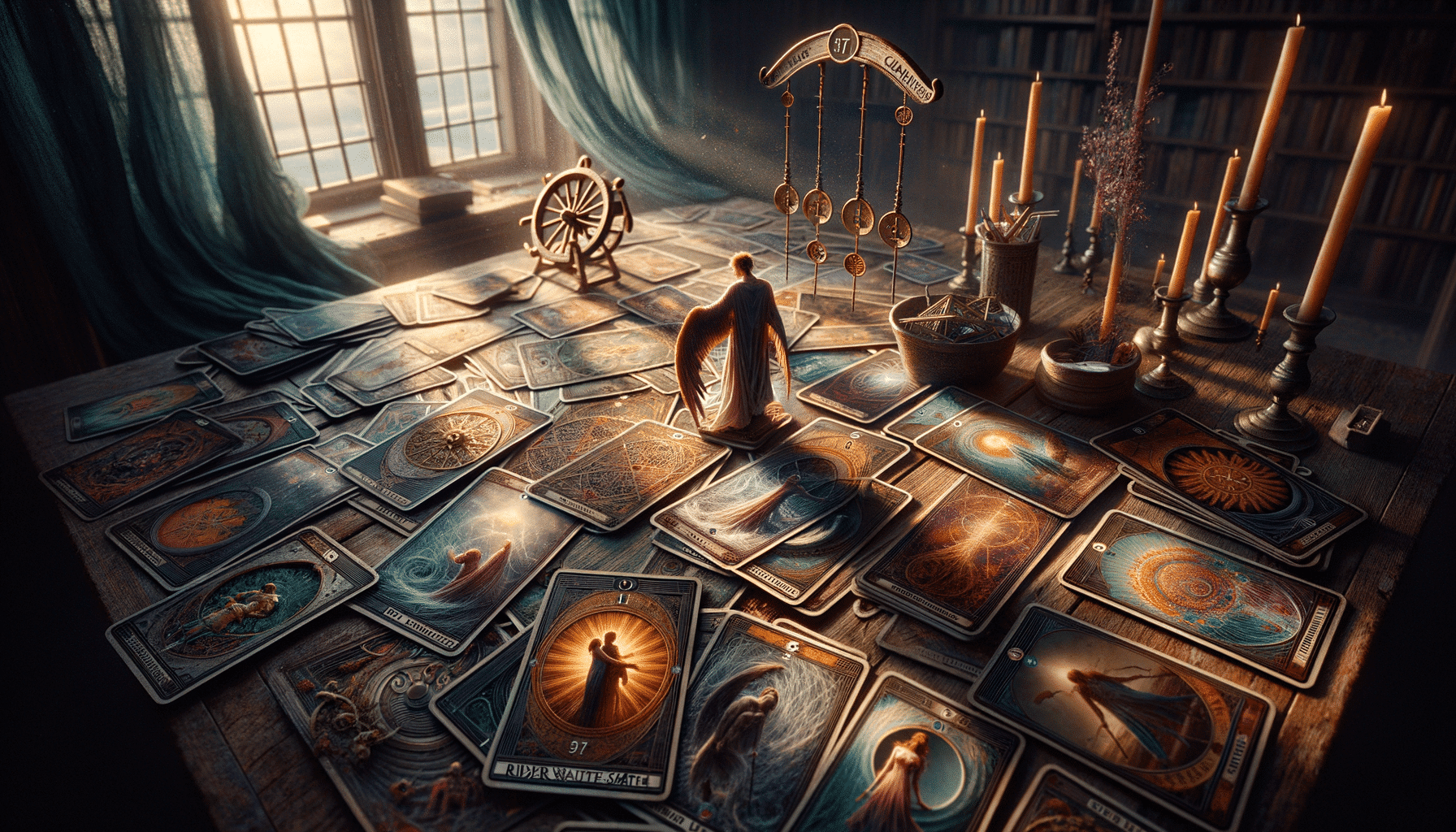
Now that you’re familiar with the structure of the tarot deck, it’s time to delve into the heart of tarot reading: understanding the symbols on the cards. Each of these symbols carries specific meanings, which can change based on the context of the reading.
For instance, you’ve probably noticed that certain cards have symbols like cups and swords. Cups typically symbolize emotions and relationships, while swords represent intellect and conflict.
Here’s a quick breakdown:
| Symbol | Meaning |
|---|---|
| Cups | Emotions, Relationships |
| Swords | Intellect, Conflict |
| Wands | Energy, Ambition |
| Pentacles | Material World, Practicalities |
It’s important to remember that these are just basic interpretations. In a reading, the position of the card within the spread, the surrounding cards, and your intuition can all affect the meaning.
Don’t get overwhelmed. It’s okay if you don’t understand all the symbols right away. With practice and patience, you’ll find that interpreting tarot cards becomes second nature. Remember, tarot reading is a deeply personal journey. It’s about finding your own unique connection to the cards and what they represent to you.
Learn about more Tarot Basics here…
Interpreting Tarot Cards for Beginners – The Meanings
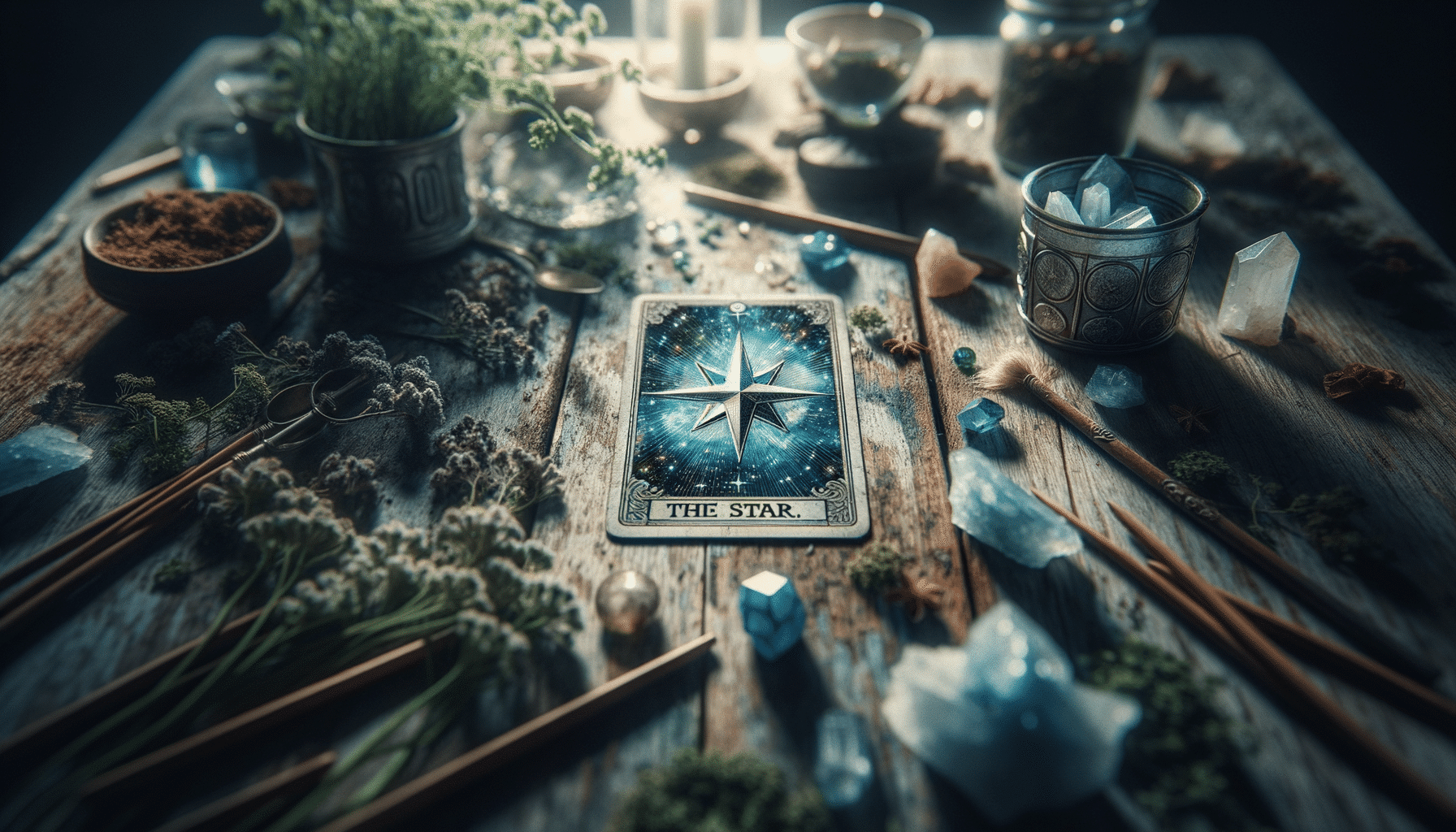
Once you’ve got a handle on the basic symbols, the next step in your tarot journey involves interpreting the specific meanings of each card. Each card in the tarot deck has a unique interpretation that has been shaped by centuries of tradition, spiritual insight, and human experience.
You’ll need to consider the card’s individual symbolism, as well as its position in the spread and its relation to the surrounding cards. For instance, the High Priestess card represents intuition and mystery when upright, but when reversed, it indicates hidden agendas or repressed feelings. Remember, there’s no absolute answer in tarot reading â it’s all about your personal interpretation and intuition.
Also, don’t forget about the influence of the Minor Arcana. These cards, divided into four suits (Cups, Pentacles, Swords, Wands), reflect everyday matters and experiences. Their meanings are often more straightforward than the Major Arcana.
Learning to interpret tarot cards is like learning a new language â it takes time and practice. But don’t worry, as long as you’re open-minded and patient, you’ll get the hang of it. Now that you’ve got the basics, let’s move on to understanding simple tarot card spreads.
Learn even more secrets of Tarot Card Interpretation here…
Simple Tarot Card Spreads
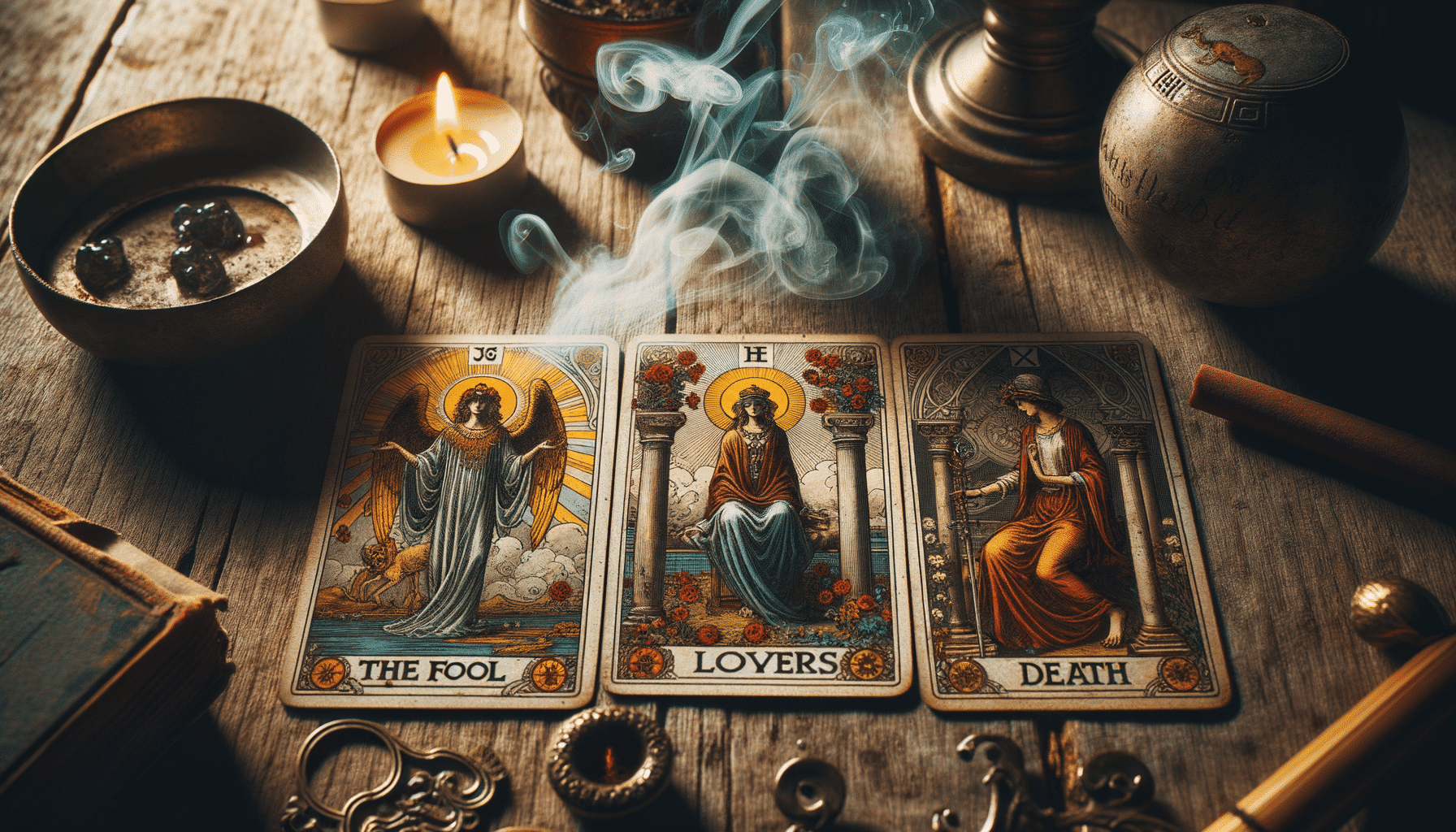
Diving into the realm of tarot, you’ll quickly come across simple tarot card spreads that can guide you in understanding the intricate relationships between cards. These spreads, or layouts, serve as maps for your readings, giving shape and context to the messages of the cards.
Here are four basic tarot card spreads you can start with:
-
The One-Card Spread: This is the simplest and quickest spread. You pull one card to answer a question or give insight into a situation. It’s perfect for daily readings.
-
The Three-Card Spread: This spread gives more depth. The cards represent the past, present, and future, or situation, action, and outcome.
-
The Five-Card Spread: This layout provides even more information, often used to explore deeper into a situation. The positions might represent past, present, future, advice, and potential outcome.
-
The Celtic Cross Spread: This ten-card spread is more complex and provides a comprehensive view of the situation, including influences, challenges, and outcomes.
Steps to Conduct a Tarot Reading
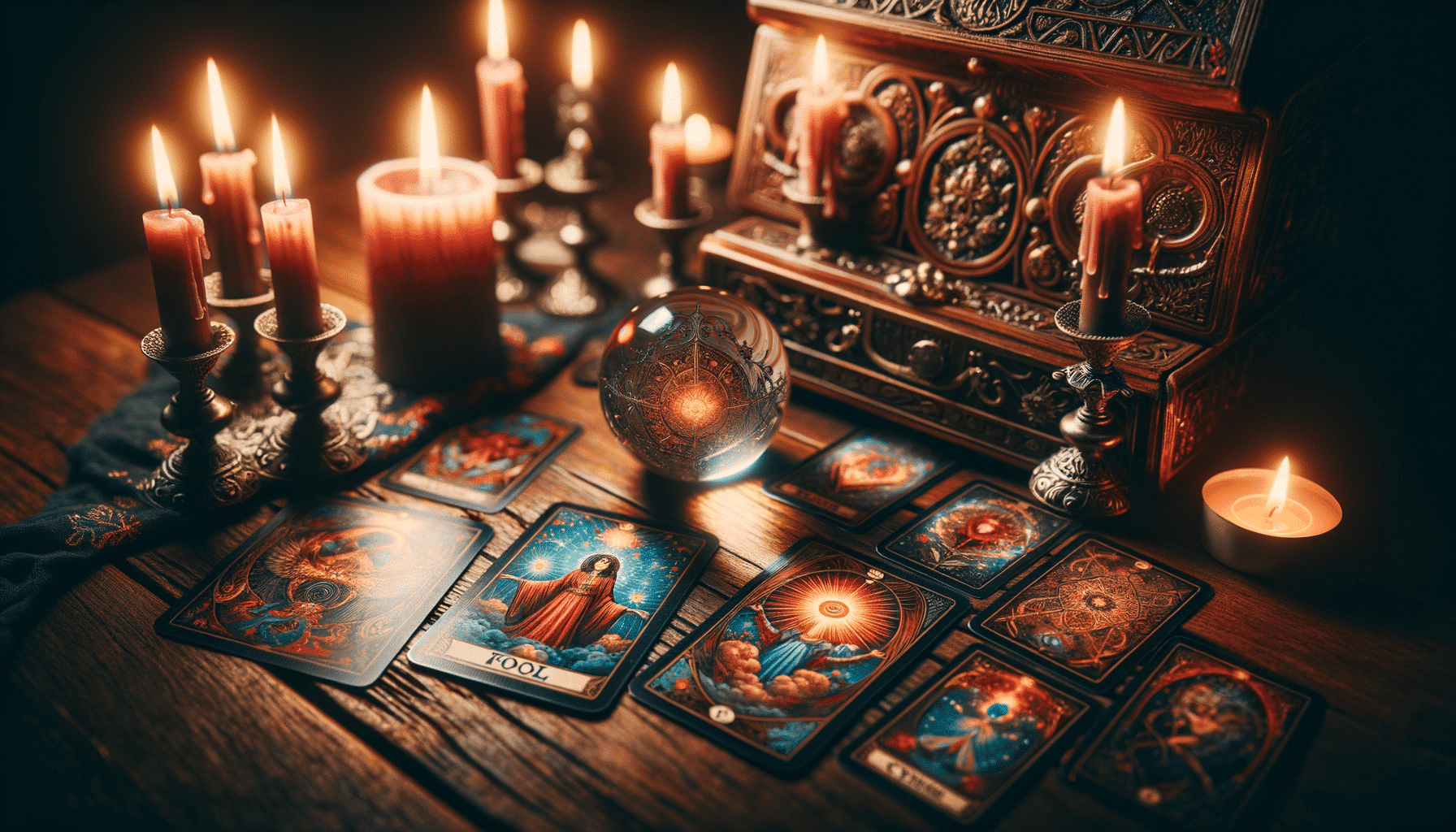
Now, let’s get into the practical part of conducting a tarot reading.
You’ll start by choosing your tarot deck, which can be a personal and meaningful decision.
Next, you’ll learn how to understand card layouts, a key aspect of interpreting the messages the tarot cards are trying to convey.
Choosing Your Tarot Deck
Choosing your Tarot deck is the first step you’ll take when learning how to conduct a Tarot reading. This is a personal and essential part of the process, as the deck you choose will become your tool for divination.
Here are four steps to help guide your choice:
-
Research different decks: There are an array of Tarot decks available, each with unique artwork and symbolism. Find one that resonates with you.
-
Consider your experience level: Some decks are better suited for beginners, while others are more complex.
-
Touch and feel the cards: If possible, physically handle the deck before purchasing. It should feel comfortable in your hands.
-
Trust your intuition: Ultimately, choose the deck that you feel a connection with. Your intuition is your best guide.
Reading Card Layouts
After selecting your ideal Tarot deck, you’re ready to dive into the fascinating world of reading card layouts, an essential step in conducting a Tarot reading. This process, often called a Tarot spread, is how you lay out the cards to interpret their meanings.
Start with a simple three-card spread. This represents the past, present, and future. Lay the cards left to right. The card on the left represents your past, the middle card, your present, and the right card, your future.
When reading, focus on the images, symbols, and colors. Each has a message to convey. Don’t rush; take your time to absorb what each card is telling you.
Common Mistakes in Tarot Interpretation
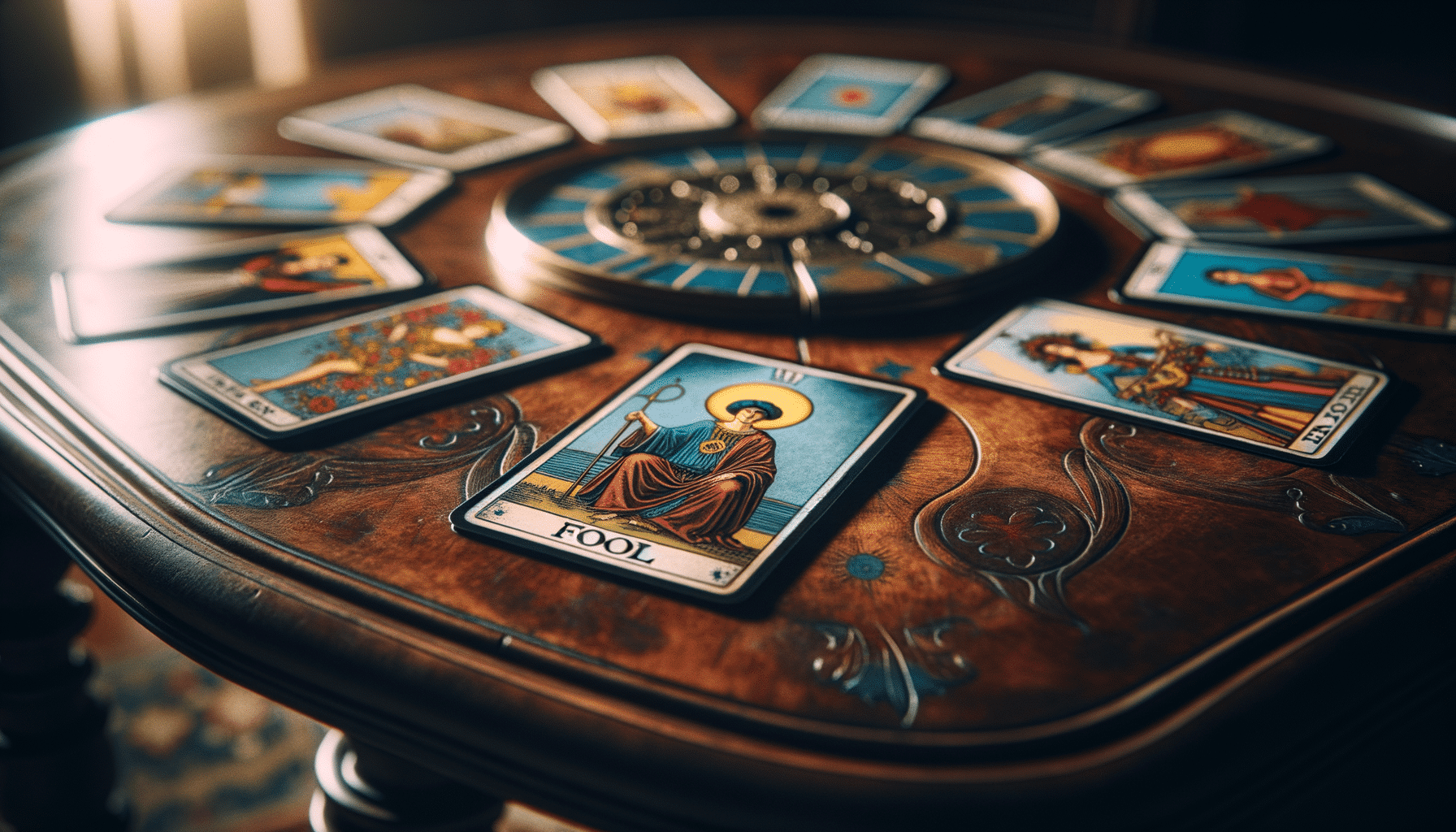
Even as you learn to interpret tarot cards, there are some common pitfalls you might stumble upon.
Misunderstanding a card’s context, ignoring your intuition, and an overreliance on guidebooks are a few of these errors.
Let’s unpack these mistakes to ensure your tarot readings are as accurate as they can be.
Misunderstanding Card’s Context
Understanding the context of each tarot card is pivotal in your interpretation journey, and misinterpretation is a common mistake you’ll want to avoid. Here’s some common mistakes you should keep in mind:
-
Ignoring Card’s Position: Each card’s meaning can change depending on its position in the spread. Don’t overlook this.
-
Forgetting to Consider Surrounding Cards: Cards aren’t read in isolation. The surrounding cards can affect a card’s meaning.
-
Relying Too Heavily on Textbook Meanings: Tarot is a personal experience. Don’t be afraid to trust your intuition over textbook meanings.
-
Disregarding Reversed Cards: Reversed cards aren’t negative. They can signify internal influences or delayed outcomes.
Ignoring Intuition
In your journey to mastering tarot interpretation, don’t dismiss your intuition’s powerful role in deciphering the cards’ messages. Ignoring your gut feelings is a common mistake. Often, intuition can guide you to insights that aren’t immediately apparent.
Here’s a table that contrasts intuitive and non-intuitive readings:
| Intuitive Reading | Non-Intuitive Reading |
|---|---|
| Relies on gut feelings | Ignores gut feelings |
| Senses subtleties in the cards | Misses subtleties |
| Opens up broader interpretations | Limits interpretation |
| Allows for personal connection | Lacks personal connection |
| Encourages intuitive development | Stunts intuitive growth |
Overreliance on Guidebooks
While intuition plays a crucial role in tarot interpretation, it’s also essential not to fall into the trap of overreliance on guidebooks, a common mistake you might make as a beginner.
Here’s why:
-
Limitation of Perspectives: Guidebooks offer one perspective, which might limit your understanding of the cards’ diverse meanings.
-
Stifling Intuition: Overreliance can stifle your intuition and personal connection with the cards.
-
Inflexible Interpretations: Tarot readings should be flexible and adaptable to the querent’s situation. Relying too heavily on a guidebook can lead to rigid readings.
-
Lack of Personal Growth: By always referring to a guidebook, you miss the opportunity to develop your unique interpretive skills.
Frequently Asked Questions

What Is the History and Origin of Tarot Cards?”
You’re asking about the history and origin of tarot cards. They originated in the mid-15th century in Europe for playing games, but by the 18th century, they’d evolved into tools for divination.
Can I Use Tarot Cards for Decision-Making in My Personal Life?”
Sure, you can use tarot cards for personal decision-making. They’re tools offering insight, clarity, and reflection. But remember, don’t rely solely on them. They guide, not dictate, your actions. Always trust your intuition.
Are There Any Spiritual or Religious Beliefs Associated With Tarot Cards?”
Yes, there’re spiritual and religious associations with tarot cards. They’re tied to mysticism, the occult, and certain religious philosophies. However, you don’t need to follow these beliefs to use tarot for personal insight.
Is There Any Scientific Evidence Supporting the Efficacy of Tarot Cards?”
No, there’s no scientific evidence supporting tarot card efficacy. It’s a tool for introspection, not prediction. Remember, tarot’s power lies in your interpretation, not in proven scientific facts or mystical forces.
How Can I Protect My Tarot Cards and Keep Them in Good Condition?”
Sure, protecting your tarot cards is important. You’ll want to keep them in a clean, dry place. Consider using a special box or cloth for storage. Don’t forget to handle them with clean hands.
Conclusion
You’ve now got the basics down to understand and interpret Tarot cards. Remember, 78% of people find the Tarot more insightful when they interpret the cards themselves.
So, don’t be swayed by common mistakes or complex spreads. Trust your instincts and let the Tarot’s symbols speak to you. It’s your journey into self-discovery, after all.
And who knows? With practice, you might just become the next Tarot master.

About The Author – Allen Hill
Allen Hill, the force behind Unknown Truth Tarot, has a YouTube following 6-times bigger than the population of his hometown, Miamisburg, Ohio. From his spiritually rich blog on Tarot and crystals to his role as CEO of The Unknown Truth Tarot Metaphysical Shop, Allen’s passion for the metaphysical shines through.
A master Tarot reader and “crystal junkie,” Allen is also a devoted dad to Dylan, 10, and Destiny, 24. When he’s not immersed in the world of Tarot and crystals, he enjoys poker and video gaming sessions, often humorously outplayed by Dylan.
Follow Allen on Twitter, Instagram, Facebook, TikTok, and subscribe to his Unknown Truth Tarot YouTube channel to join him on a journey of spiritual growth and self-discovery.



